Louis le Brocquy HRHA (b.1916) Image of W.B. Yeats Oil on canvas, 80 x 80cm (31.25 x 31.25'') Signed and dated 1981 verso Provenance: Sold by the artist, Artists For Amnesty Art Auction, 1982. Collection John Meagher Anne and Louis coordinated Artists For Amnesty Art Auction, works of art, literature and music by international artists, writers and composers, sold in aid of the Irish section of Amnesty International (May 1982). The auction was the first of its kind in Ireland to benefit an NGO. Participating artists included Francis Bacon Joseph Beuys Joan Miro, Valerio Adami Eduardo Chilida, Samuel Beckett Seamus Heaney, Henry Moore Antonio Saura and Henri Matisse - through their friend Pierre Matisse. exhibited: Louis le Brocquy Images, 1975-1988, Mus?e Picasso, Antibes, 1 July - 15 September, 1989 (hors catalogue). Yeats, the most varied mind of the Irish race, the last - and perhaps the only -- Romantic poet in English to manage a full career. Le Brocquy, the most dedicated Irish painter since Yeat's brother died, with an intuitive sympathy for literature and mythology, an increasingly rare reverence before the human. Their meeting has an aspect of inevitability. In the last decade le Brocquy has reinvented for himself the idea of portraiture, moving through family and friends to contemplate master spirits of his country, like Joyce and Beckett. As he says ''simply because by their works I know them, and am drawn to peer through their familiar, ambiguous faces which mask and at the same time embody - the great worlds of their vision''. And now Yeats, whom le Brocquy knew as a boy. Fascinatingly, the ideals and techniques of the two artists have much in common. One of the foolishnesses of modern psychology is to believe that we have only a few, usually warring, selves. But a Prospero, like Yeats, may live many lives, inhabit many faces, while achieving a unity in variety. At an early stage, he began to play with his doctrine of the Mask, the anti-self, as a discipline for spiritual or physical plenitude. ''I call to my own opposite'', he says, ''all / That I have least looked upon''. Let us examine his selves, as they pass before us, in slow procession. There is the dreamy young man who pressed himself to the earth of Sligo and Howth, like a lover. He wanted to go and live on an island, or in a cave, like Shelley's Alastor, a young man burdened with dreams. But dreams can be harnessed and that young romantic, a cowslick of hair carefully plastered over his brow, is a more wily customer that he seems. George Moore might wickedly compare his cawing voice to a crow's, his solemn poet's robes to an umbrella left behind at a picnic, but he also testified to his intellectual strength. It took a masterful man to found and manage the Abbey Theatre, to propagandise for an Irish Literary Renaissance. So the tuneless crow becomes a sacerdotal heron, a high priest of the arts. And the gaunt celibate becomes a great lover,who kneels before Maud Gonne, the English army captain's daughter who was his personification of Ireland, as Petrarch did before Laura, Homer before Helen. Love has as many allotropes as carbon - from soot to diamond - and Yeats weathered all the stages, crying out in frustration for the bosom of his ''faery bride'', swearing friendship with Olivia Shakespeare, collaborating with Lady Gregory, achieving a profoundly psychic exchange in his marriage with his medium wife. For Yeats was a trained mystic, a member of the Order of the Golden Dawn, who did not play with, but actually practised magic. Technically, le Brocquy's method is akin to that of certain noble poems of Yeats where he names and numbers his friends, living and dead, or sets different aspects of himself to dialogue, even to dance. So the painter invokes faces of the poet, public and private, to challange and exchange. Compare earlier and later visages. The short-sighted sighing inventor of the Celtic Twighlight is now a ''smiling public man'' (No. 5
Louis le Brocquy HRHA (b.1916) Image of W.B. Yeats Oil on canvas, 80 x 80cm (31.25 x 31.25'') Signed and dated 1981 verso Provenance: Sold by the artist, Artists For Amnesty Art Auction, 1982. Collection John Meagher Anne and Louis coordinated Artists For Amnesty Art Auction, works of art, literature and music by international artists, writers and composers, sold in aid of the Irish section of Amnesty International (May 1982). The auction was the first of its kind in Ireland to benefit an NGO. Participating artists included Francis Bacon Joseph Beuys Joan Miro, Valerio Adami Eduardo Chilida, Samuel Beckett Seamus Heaney, Henry Moore Antonio Saura and Henri Matisse - through their friend Pierre Matisse. exhibited: Louis le Brocquy Images, 1975-1988, Mus?e Picasso, Antibes, 1 July - 15 September, 1989 (hors catalogue). Yeats, the most varied mind of the Irish race, the last - and perhaps the only -- Romantic poet in English to manage a full career. Le Brocquy, the most dedicated Irish painter since Yeat's brother died, with an intuitive sympathy for literature and mythology, an increasingly rare reverence before the human. Their meeting has an aspect of inevitability. In the last decade le Brocquy has reinvented for himself the idea of portraiture, moving through family and friends to contemplate master spirits of his country, like Joyce and Beckett. As he says ''simply because by their works I know them, and am drawn to peer through their familiar, ambiguous faces which mask and at the same time embody - the great worlds of their vision''. And now Yeats, whom le Brocquy knew as a boy. Fascinatingly, the ideals and techniques of the two artists have much in common. One of the foolishnesses of modern psychology is to believe that we have only a few, usually warring, selves. But a Prospero, like Yeats, may live many lives, inhabit many faces, while achieving a unity in variety. At an early stage, he began to play with his doctrine of the Mask, the anti-self, as a discipline for spiritual or physical plenitude. ''I call to my own opposite'', he says, ''all / That I have least looked upon''. Let us examine his selves, as they pass before us, in slow procession. There is the dreamy young man who pressed himself to the earth of Sligo and Howth, like a lover. He wanted to go and live on an island, or in a cave, like Shelley's Alastor, a young man burdened with dreams. But dreams can be harnessed and that young romantic, a cowslick of hair carefully plastered over his brow, is a more wily customer that he seems. George Moore might wickedly compare his cawing voice to a crow's, his solemn poet's robes to an umbrella left behind at a picnic, but he also testified to his intellectual strength. It took a masterful man to found and manage the Abbey Theatre, to propagandise for an Irish Literary Renaissance. So the tuneless crow becomes a sacerdotal heron, a high priest of the arts. And the gaunt celibate becomes a great lover,who kneels before Maud Gonne, the English army captain's daughter who was his personification of Ireland, as Petrarch did before Laura, Homer before Helen. Love has as many allotropes as carbon - from soot to diamond - and Yeats weathered all the stages, crying out in frustration for the bosom of his ''faery bride'', swearing friendship with Olivia Shakespeare, collaborating with Lady Gregory, achieving a profoundly psychic exchange in his marriage with his medium wife. For Yeats was a trained mystic, a member of the Order of the Golden Dawn, who did not play with, but actually practised magic. Technically, le Brocquy's method is akin to that of certain noble poems of Yeats where he names and numbers his friends, living and dead, or sets different aspects of himself to dialogue, even to dance. So the painter invokes faces of the poet, public and private, to challange and exchange. Compare earlier and later visages. The short-sighted sighing inventor of the Celtic Twighlight is now a ''smiling public man'' (No. 5

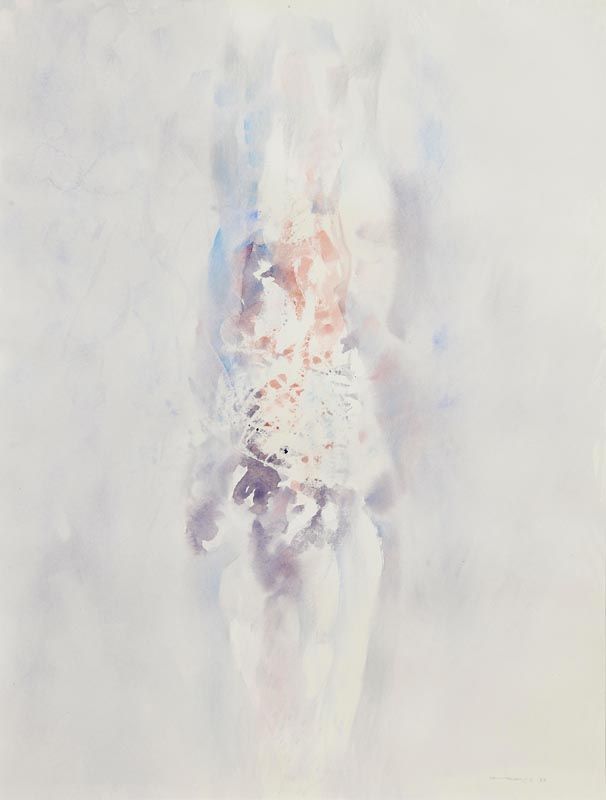



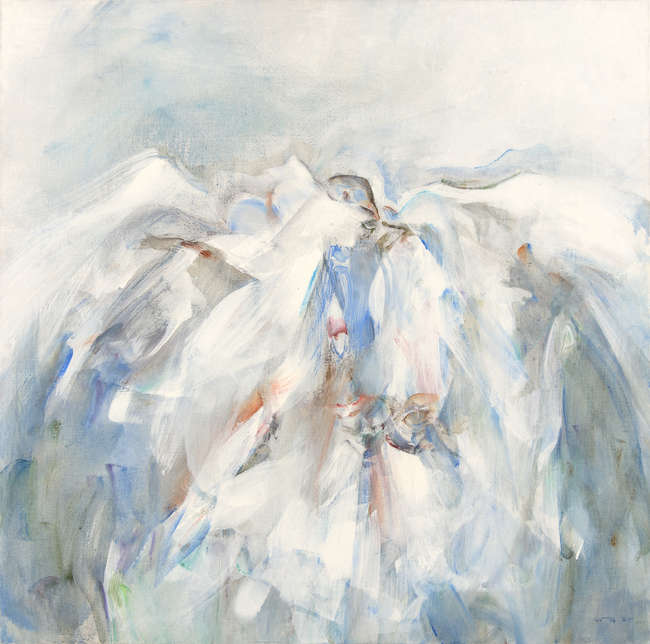
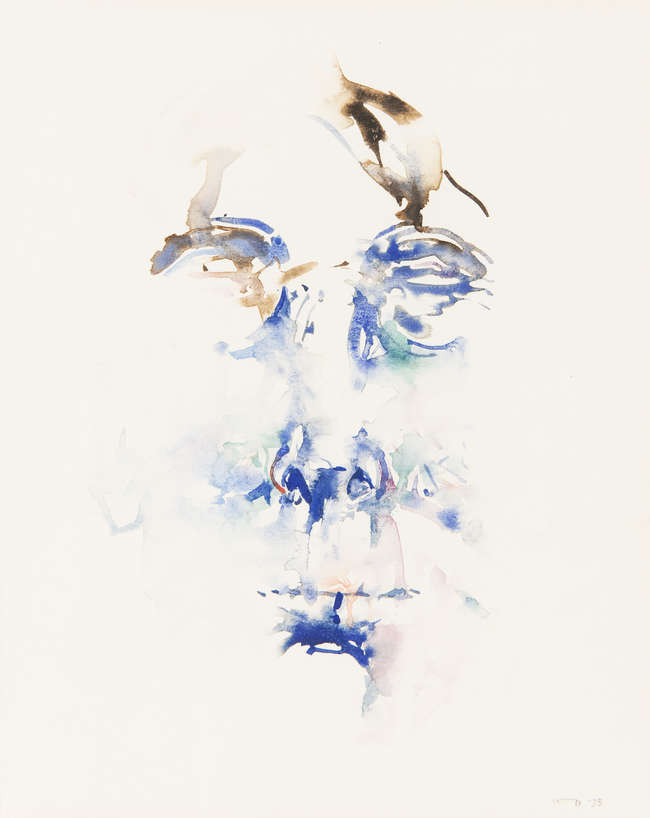
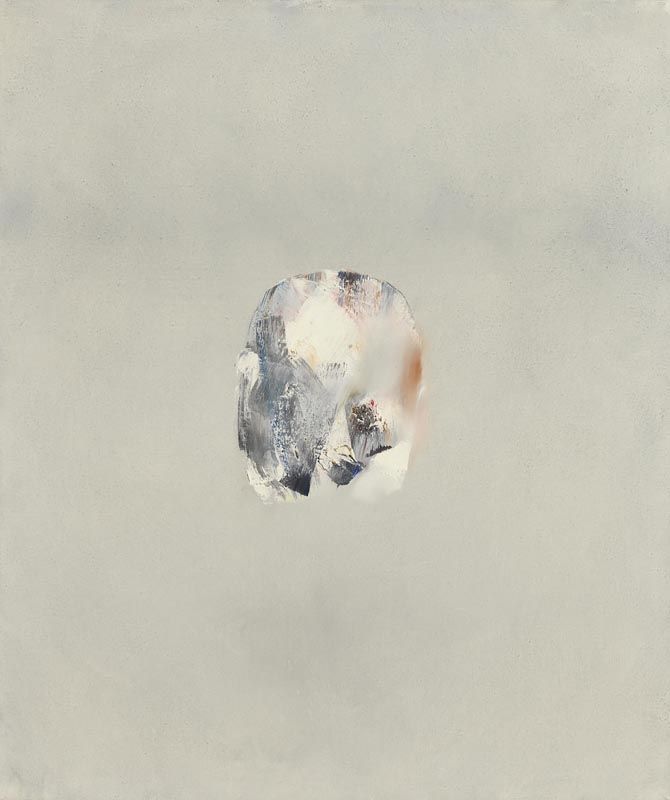
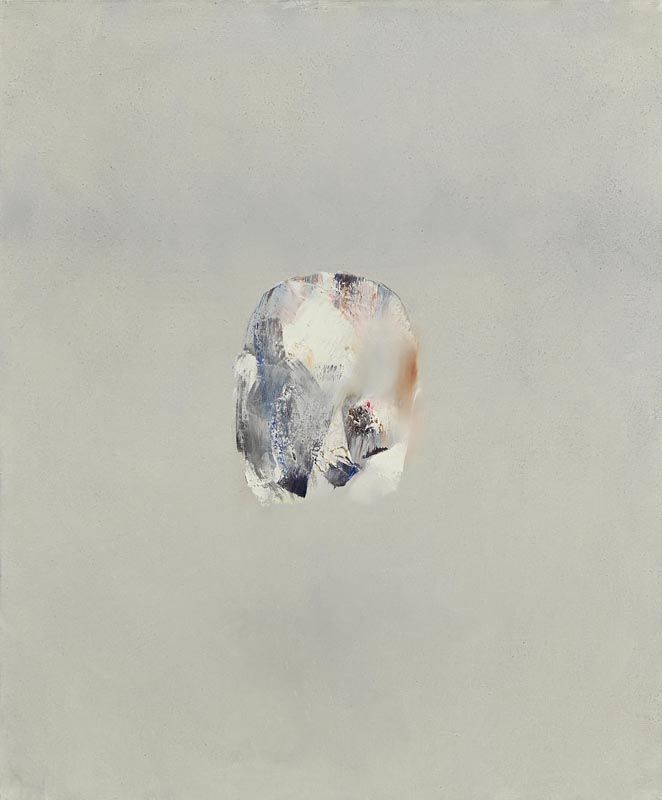
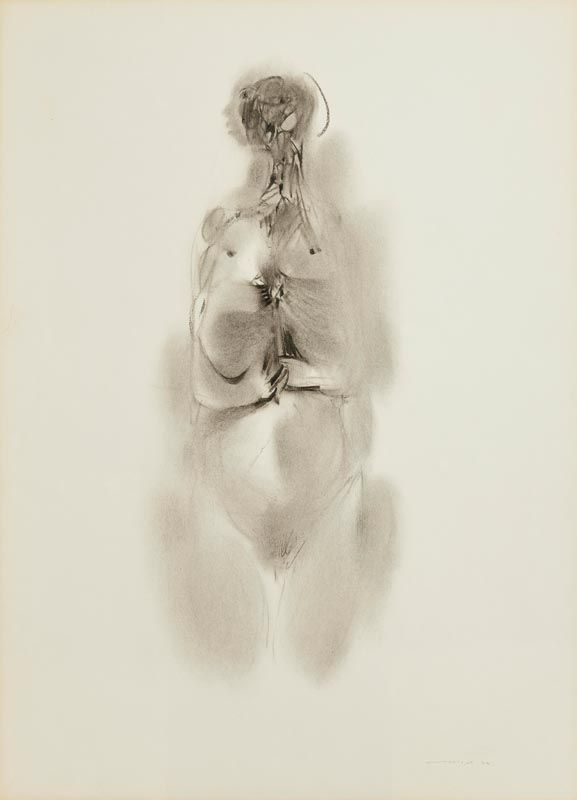
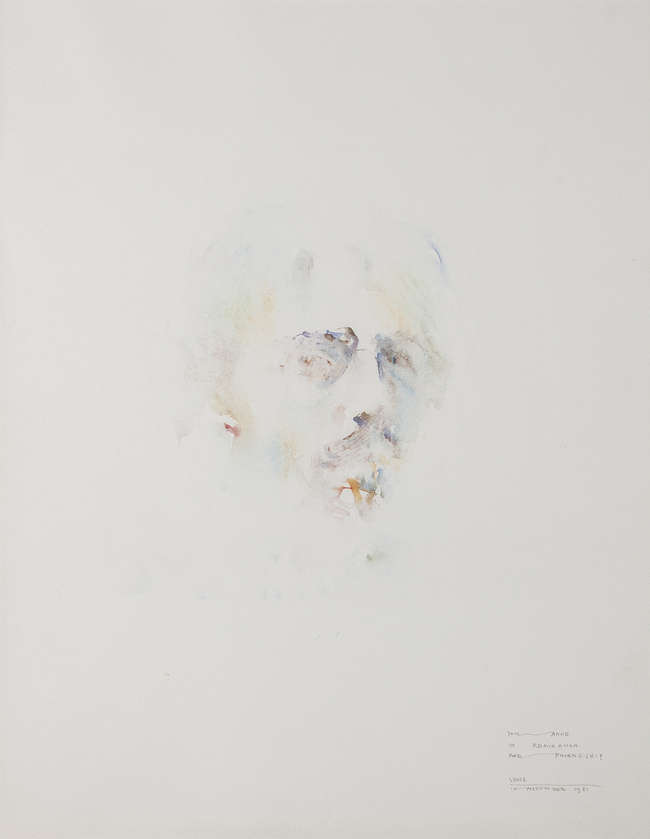
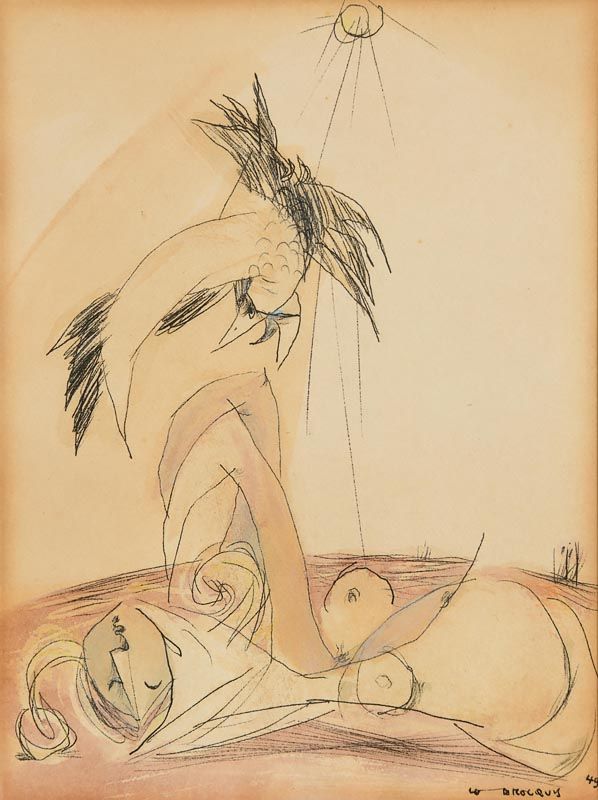



Try LotSearch and its premium features for 7 days - without any costs!
Be notified automatically about new items in upcoming auctions.
Create an alert